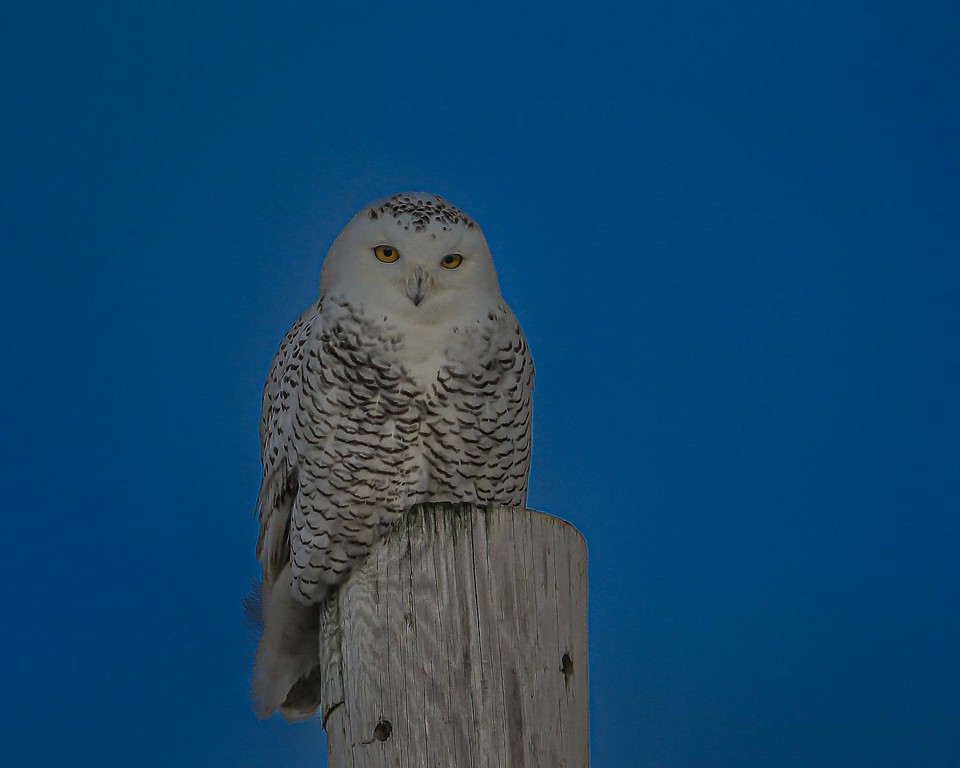You don’t need to head deep into the Adirondacks this winter for a chance to spot some of the area’s endangered and threatened species of birds. Washington County’s natural landscapes are home to more than 100 species of birds that breed, overwinter, or migrate through the area.
A number of species migrate each year to a number of winter birding locations in Upstate New York, including snowy owls, short-eared owls, and rough-legged hawks.
The grasslands extend from the rolling hills of southern Washington County to the southeastern peaks of the Adirondack Mountains. Raptors rely on this “open-country” habitat for protection and migrate south to roost and hunt for mice, voles, and other small prey.
The Washington County Grasslands Important Bird Area is also a winter home to snow bunting, horned larks, and northern shrike, and a year-round home to northern harriers. There are occasional sightings of eastern meadowlarks and even a peregrine falcon.
Check out these public viewing areas to catch a glimpse of some of these birds of prey:
Alfred Z. Solomon Grassland Bird Viewing Area (Grassland Bird Trust):
Located on County Route 42 in Fort Edward, the site offers an accessible parking area and covered viewing blind on the Loftus parcel. It overlooks hundreds of acres of prime grassland habitat, including approximately 80 acres of fields owned and managed by Grassland Bird Trust. In 2024, the Trust opened a 2.5-mile trail allowing visitors to enjoy an even closer winter birding experience.
Washington County Grasslands WMA (New York State Department of Environmental Conservation/ DEC):
Located on Blackhouse Road, this state-owned site offers a 1/2 mile trail to a viewing platform and a wheelchair-accessible walkway and viewing platform overlooking a large conserved field.
Photo provided by Bill Chase | @bchasen_nature
Additionally, you can try winter birding at these other locations around Washington County:
Mildred Denton Wildlife and Bird Sanctuary:
Located along both sides of Rt. 4 in Greenwich, this birding area offers many different landscapes. The eastern parcel features walking trails varying in length from 1 to 3 miles, with mixed hardwoods and swamp, stream, and forest habitats. On the West is a wetland area, including river frontage and a small pond.
The Denton Wildlife Sanctuary is a year-round adventure for birdwatching, and home resident favorites such as Black-capped Chickadee, Tufted Titmouse, White-breasted Nuthatch, Red-breasted Nuthatch, Brown Creeper, and Cedar Waxwing.
Lake Champlain’s South Bay:
As temperatures drop, many migratory waterfowl leave for the season. But the quiet, chilled air makes winter birding along Lake Champlain even more enjoyable. Open water or ice holes cut by fishermen near the public pier often attract Bald Eagles in winter. Golden Eagle sightings are reported almost every year, usually during migration, although it’s the fortunate bird watcher who sees one.
Carter’s Pond Nature Trail:
Managed by the DEC, this Bird Conservation Area (BCA) is a 447-acre wetland and upland complex dedicated to the preservation of migratory waterfowl and other area birds. The pond attracts large flocks of ducks and geese during spring and fall migrations, as well as blue herons and osprey. Enjoy a leisurely walk this winter and you may glimpse an eagle as ice-fishing is common on Carter’s Pond. The parking areas at Carter’s Pond are not plowed during snowfall, but trails are open year-round.

New to Winter Birding? Do It Safely
If you’d like to try bird watching this winter, remember to follow the general rules of birding to help protect their crucial habitats. According to the NY State Department of Environmental Conservation, keep these tips in mind to observe birds in a safe and legal manner:
- Do not enter private property without the permission of the landowner.
- Park cars well to the side of the road, completely out of travel lanes.
- Stay off the road while observing birds and pay attention to traffic, not the birds, when crossing roads.
A key part of respectful bird watching is being able to identify local bird habitats. If you know where birds typically roost or live in winter, then it’ll be much easier to avoid disturbing them.
It’s common for winter raptors to nest and roost on the ground where there is snow cover. If you’re planning to go birding in this habitat, stick to marked trails or head to a designated viewing spot. Do not cross over open fields or sections of grassland as you may not see the birds underneath the snow.
Be sure to keep your distance and remember those binoculars. Birds are trying to gain food and conserve energy during these difficult months, and spooking them can hurt their chances of making it through the winter.







